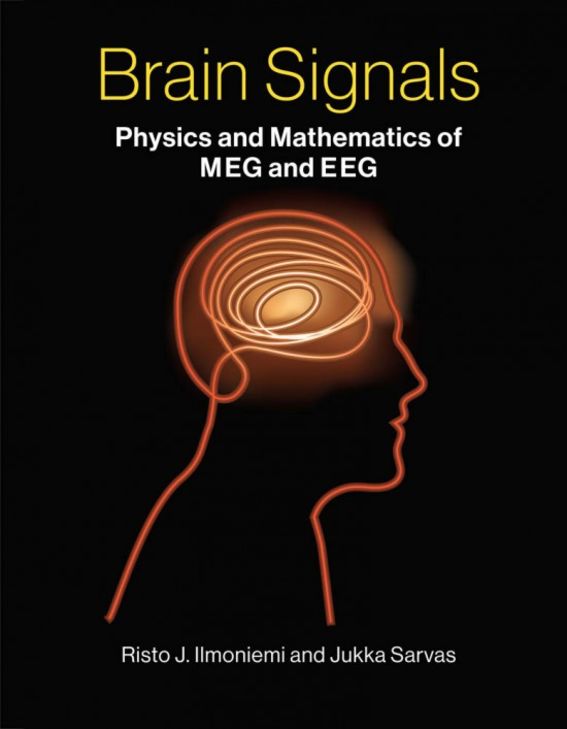Aalto Professors publish new neuroscience textbook

Brain Signals: Physics and Mathematics of MEG and EEG by Professor Risto Ilmoniemi and Professor Emeritus Jukka Sarvas has been published by MIT Press. The book deals with electroencephalography (EEG) and magnetoencephalography (MEG) – which are ways of imaging the electric activity of the brain – and the physics and mathematics used in the analysis of the measured signals. The book is useful for researchers and students of the neurosciences, as well as for medical physicists and product developers.
Between them, both Sarvas and Ilmoniemi have produced some of the most highly cited academic publications in the neurosciences.
They crossed paths in 1985 at the Low Temperature Laboratory of the Helsinki University of Technology, when Ilmoniemi presented his doctoral dissertation and Sarvas served as the opponent. Sarvas’s previous work had included the mathematical analysis of how electromagnetic methods are used in prospecting for ore. The same mathematical methods are now used in brain research.
‘The previous textbook of its kind was published in the 1990s and since then the field has developed tremendously with respect to equipment and software. Brain Signals is the first uniform work about EEG and MEG that has the foundations of physics and mathematics as its starting point. Books that have previously been published have mainly been compilations involving several writers’, Jukka Sarvas says.
EEG devices are widely used in modern medicine. Practically every hospital—even small ones—has at least one. The results from these devices are usually analyzed in very simple ways.
‘However, there are not many experts with enough understanding of the mathematics and physics behind the results to be able to evaluate the reliability of the results, or to choose the best method of analysis on a case-by-case basis. There is often little more than simple analysis done in clinical work; for example, data for epilepsy are usually only interpreted visually’, Risto Ilmoniemi says.
Laboratories that have the MEG method, which is more accurate than an EEG, but many times more expensive, number only about 200 worldwide. MEGIN, a company that got its start at Helsinki University of Technology—merged into Aalto University—is a market leader in its field: there is a Finnish device in more than 100 laboratories.
The book also describes a flagship project in quantum technology, headed by Professor Lauri Parkkonen, which is aimed at upgrading the MEG method with new sensor technology. These new sensors, optically-pumped magnetometers, can be placed directly on the scalp, allowing an array of such sensors to adapt to the size and shape of the head of the person being examined. This is beneficial both in fundamental research and in clinical applications, such as in localizing epileptogenic areas before surgery. These measurements can be as accurate as invasive measurements performed inside the skull.
Further information:
Read more news

Get to know us: Associate Professor Maria Sammalkorpi
Sammalkorpi received her doctorate from Helsinki University of Technology 2004. After her defence, she has worked as a researcher at the Universities of Princeton, Yale and Aalto.
Aalto computer scientists in ICML 2024
Computer scientists in ICML 2024
Getting bacteria into line
Physicists use magnetic fields to manipulate bacterial behaviour